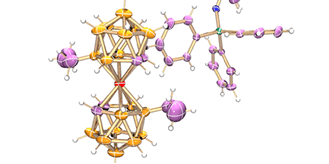Category Archives: Former Research
Gas Separations and Water Desalting
Recycling metal ions is one of the main targets of nowadays industrial policy. Decontamination of industrial water streams is necessary for the health of people, to provide a good quality of life and to preserve the environment. Although the technology … Continue reading
Recycling Heavy Metal Ions from Industrial Waste Water

Recycling metal ions is one of the main targets of nowadays industrial policy. Decontamination of industrial water streams is necessary for the health of people, to provide a good quality of life and to preserve the environment. Although … Continue reading
Recycling of Radionuclides from Nuclear Waste

Nuclear waste reprocessing operations produce both high level and medium level activity liquid wastes (HLW/MLW). The major nuclides in these radioactive wastes are those with long half-lives, mainly beta/gamma emitters or alpha emitters such as transuranium elements.
Ion Recognition

Ion recognition, thus chemical sensors based on Ion Selective Electrodes, or ISFET’s, Ion Selective Field Effect Transistors; transport membranes based on Supported Liquid Membranes (SLM’s) and Fixed Site Complexing Membranes (FSCM’s). Ion Selective Electrodes: We have developed a new material … Continue reading
Tricarbaboranes

The chemistry of the eleven vertex nido -tricarbollides, in contrast to that of the dicarbollides is very small. It was as late as in 1995 when the first representatives of this family were reported by the collaborative work of this … Continue reading
Dicarba-Closo-Dodecarborane-Derivative

The Teixidor’s research group is interested in working with dicarba-closo-dodecaborane C2B10H10. One of the capital features of these carboranes is the capability of the 2 carbon atoms and 10 boron atoms to adopt the icosahedral geometry in which the carbon … Continue reading
